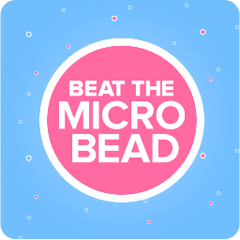We’re working to pass legislation to ban microbeads in consumer products in Vermont. These beads are found in numerous varieties of home beauty products: toothpaste, facial cleanser, soap, and body wash to name a few. And even a little tube can pack a big punch when rinsed down the drain- The 5 Gyres Institute estimates that one tube of common facial cleanser contains over 300,000 plastic microbeads.
Right now H.4, Vermont’s bill to ban microbeads, is still being debated. Showing our lawmakers the need to ban these tiny polluting microplastics will be critical. We can all do our part to both raise awareness and not contribute to plastic pollution in Vermont lakes, rivers, and streams.
That’s why we’ve created VPIRG’s guide to going microbead free.
1. Reach out and send a message to your Senator(s).
Urge Vermont elected officials to pass legislation that will ban microbeads in Vermont this legislative session. Click here to use VPIRG’s handy web form to send a custom email directly to your lawmakers.
Until we pass the bill, read on for more ways to be a conscientious consumer.
2. Scan the Bar code:
If you have a smartphone, click here to download the free beat the bead app from the Plastic Seas Foundation. Using this great app, you can scan bar codes during a shopping trip to determine if a product has microbeads inside.
3. Check the Label:
Look at the ingredient list on the back of a product. Microbeads are mainly made of polyethylene (PE), but can be also be made of polypropylene (PP),polyethylene terephthalate (PET), polymethyl methacrylate (PMMA) and nylon. To keep it simple, If an item begins with the prefix “poly” the product is highly likely to contains microbeads.
4. Buy Local:
Consider buying local soaps and personal beauty products from a Vermont retailer committed to keeping micro beads out of their product and out of our waters.

